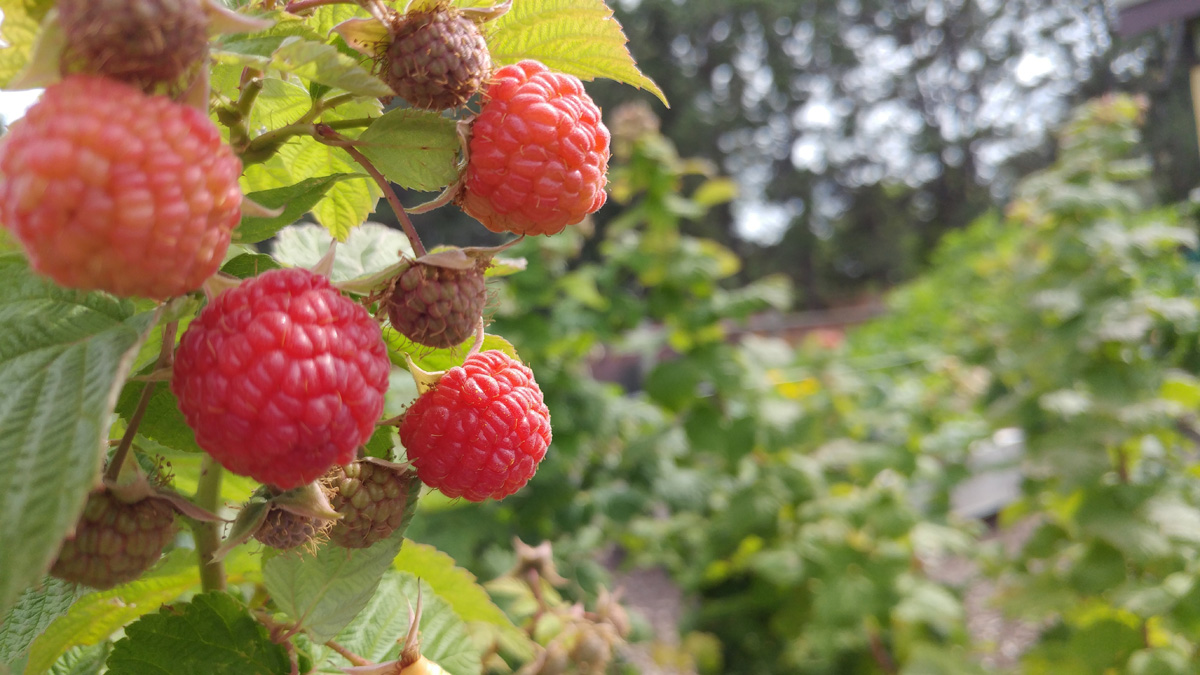
Tend to your lawn. If you haven’t had to mow your cool-season turf yet, you soon will, so take advantage of the time now and sharpen your mower blades. This will ensure a season of clean cut grass, which not only recovers faster but also takes less time to mow. If crabgrass is an issue in your lawn, keep an eye out for when forsythia (Forsythia spp. and cvs., Zones 3–9) comes into bloom, as it is a good reminder of when to apply crabgrass preventer. Bare or thin patches in your lawn should be seeded as well, but be sure to avoid applying crabgrass preventer to those areas, as it can also inhibit germination of desired grasses. Finally, schedule your spring lawn fertilizing now to really boost growth, and continue to monitor and manage those broadleaf weeds.

Prepare your beds for planting. For most of us in the Northern Plains, this month holds the last chance for frost, and the time is right to clean up anything left in the garden that you haven’t been able to get to yet to prepare for another growing season. As your perennials start to wake up, don’t forget to cut back last year’s growth. Additionally, be sure to trim out any damage in your shrubs from winter weather or hungry rabbits you may have missed during that initial spring cleanup rush. Now is also the time to prepare your planting beds for summer annuals by incorporating compost or a slow-release fertilizer prior to planting. To ensure that those annuals have a great start, consider hardening them off by slowly increasing the amount of time they are set outdoors each day in the seven to 10 days prior to planting them out. After months of time spent in a perfect environment with minimal temperature swings, hardening your plants off ensures they can tolerate and thrive outdoors.

Do some spring bulb after-care. As your spring-blooming bulbs finish up, you may feel tempted to clean them up by cutting them back. You can remove spent flowers, which frees up energy the plants would be using to produce seeds and directs it instead to overall growth. But it is very important to leave the foliage and let it naturally die off before removing it. This is bulbs’ only way of recharging themselves for another show of flowers next spring. Once the foliage dies down you can move or divide any of your spring bulbs as well.

Give your new fruit trees a head start. If you are adding any new fruit trees to your landscape this year, remove any flowers or fruit they may produce this first season. You will be glad you did when next year’s fruit production exceeds that of trees that didn’t get this treatment. Similar to the act of deadheading, the removal of flowers and fruit encourages trees to put energy into growth and establishment during their first year instead of reproduction. Cane fruit crops also need attention at this time. They should be thinned out to ensure proper the proper flow of air and light throughout the stands as well as to reduce pest and disease pressure.

Don’t neglect your houseplants. Now that we are finally able to get outside and do some gardening, we can sometimes forget or neglect our houseplants. Much like the plants outdoors, many of your indoor plants are also experiencing a flush of new growth in response to warmer temperatures and increased light levels. To maintain a nice and balanced form to your houseplants, routinely rotate them to avoid an unbalanced form that stretches toward their light source, a phenomenon known as phototropism.
Better yet, let them enjoy the outdoors this summer once nighttime temperatures aren’t dropping below 50°F by placing them outside in a location that receives morning light but is shaded from the heat of late afternoon sun. They will require more frequent watering when outdoors, but if you place them among your containers of summer annuals, additional watering can be a breeze; in addition, they will bring more layers of foliage and flowers to your landscape. But be sure to keep your tender tropicals such as members of the orchid family (Orchidaceae) and African violets (Streptocarpus spp. and cvs., Zones 11–12) inside all year to keep them healthy and happy.
—Chris Schlenker is the head gardener of McCrory Gardens at South Dakota State University in Brookings, South Dakota.


















Comments
Log in or create an account to post a comment.
Sign up Log in